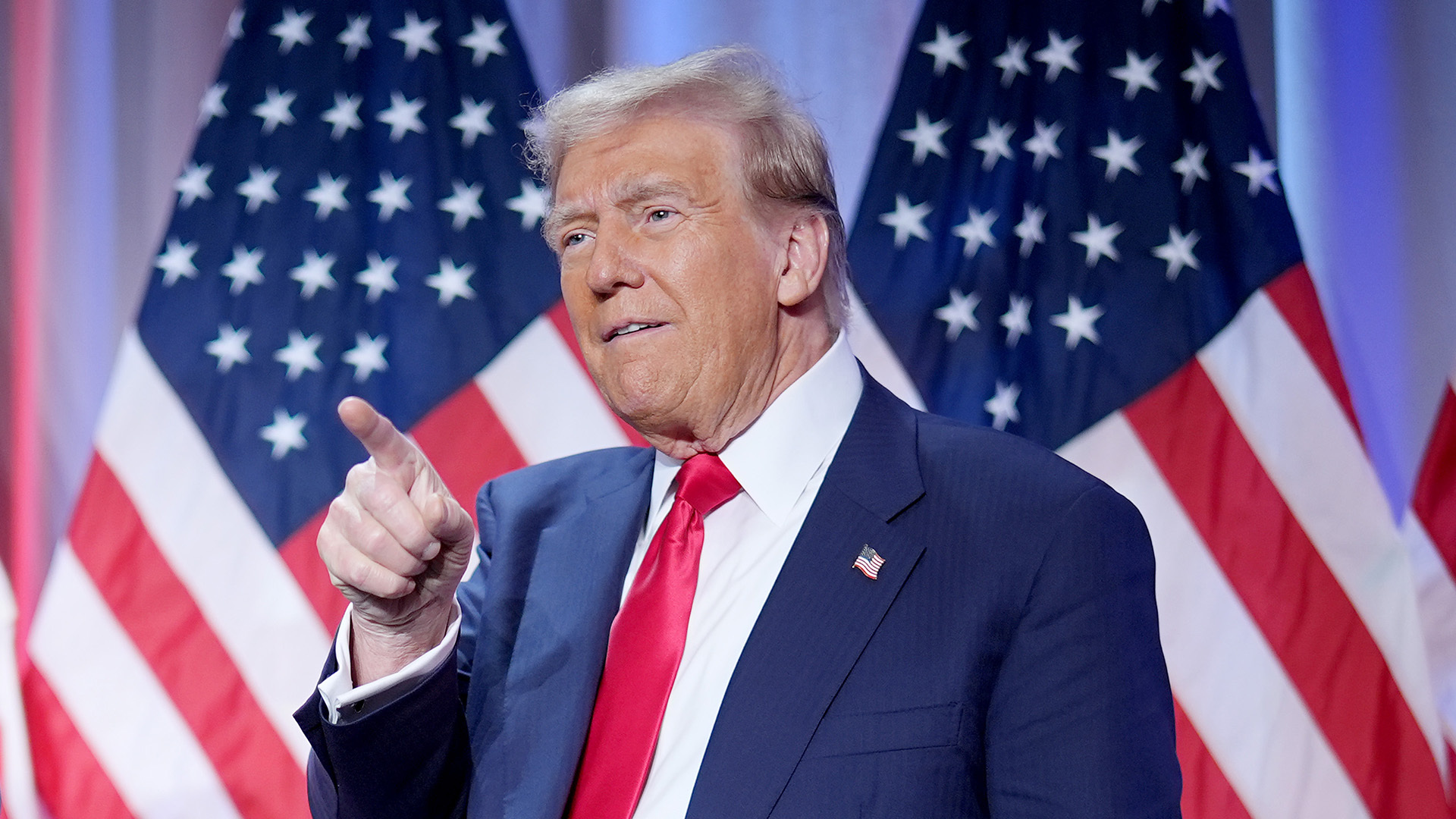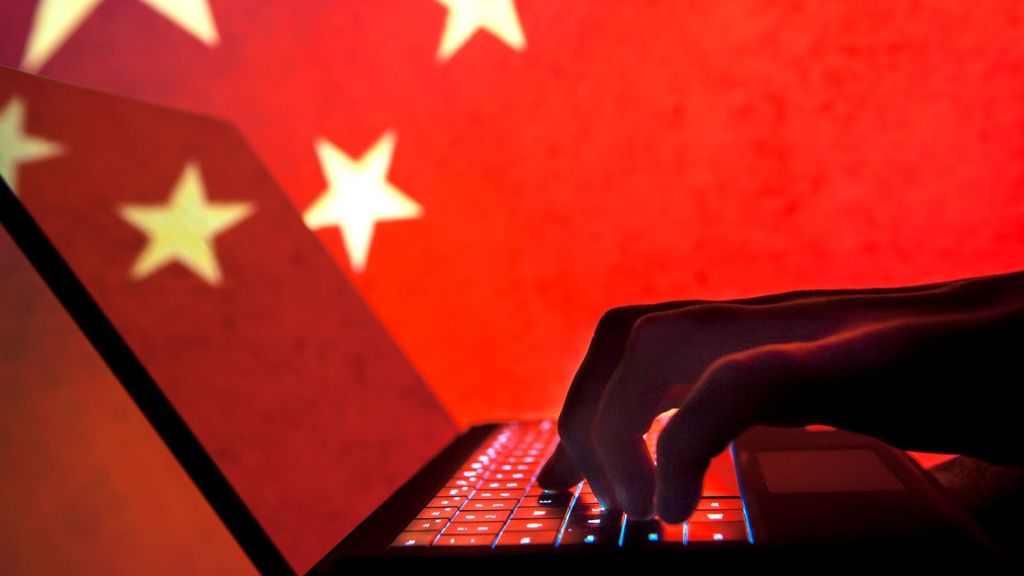
Simone Del Rosario: There’s a lot to talk about today, so I want to bring in Mary. Lovely. Mary is the Senior Fellow at the Peterson Institute for International Economics. Mary, it is lovely to have you this morning.
Mary Lovely: Thank you. Great to be with you this morning, Simone.
Simone Del Rosario: And can you give us a little bit of idea of what your current research is? And one of the big reasons we brought you one, you have a lot of research on China tariffs. Tell us about it.
Mary Lovely: Yeah, my research focuses on US China trade flows and trade relations, and also on the Chinese economy. Obviously, with the election, this being an election year, I’ve done a lot of work on tariffs and what they might mean for consumer prices, for who pays the tax burden, especially as president elect Trump has talked about replacing some of the income tax with tariffs revenue. Yeah,
Simone Del Rosario: And he’s proposed a lot of tax cuts. Several things on his proposal list are in nature inflationary. Tax cuts. We are going to be seeing increased spending. And then, of course, tariffs,
Mary Lovely: Yes, of course. Tariffs would certainly be, you know, number one on my list for what’s going to be inflationary. He’s promising them at high rates, so on China, 60% and we can talk about kind of which goods and services are that really, is that really going to affect, and he’s promised them quickly, so we may see them, you know, as early as q2 of next year. And of course, his expectations, people know that’s coming, that will be built into expectations for prices and rates.
Simone Del Rosario: Would you expect companies to be raising prices ahead of President elect Trump even going into office.
Mary Lovely: I think that companies want to raise prices when they feel consumers are able to accept them. So it may be when they’re bringing out a new model, or when they’re just refreshing their price list for customers, if they’re dealing with industrial. Customers, or if they think the economy is moving ahead really well, and we may see the economy growing a little bit faster. It’s already doing really well, but a lot of President Elect Trump’s program is, in fact, expansionary. One reason why we’re worried about inflation. And so if the economy is growing well, people’s incomes are rising, firms may feel more comfortable passing those along even preemptively.
Simone Del Rosario: We know that President-elect Trump is promising big tariffs. This has been a cornerstone of his economic policy. And look, when he says something, believe him, he’s, you know, he showed us his first term, he had things in place. He said, I’m going to do this. And then he did it. So he has talked about tariffs. I’ve talked to a lot of economists on all sides of the aisle. And, you know, some people are saying, Well, I think he’ll end up doing something more targeted. We’re going to work off of, you know what he’s told us, He wants across-the-board tariffs, and he wants really high tariffs on China and perhaps Mexico as well might come into play. So that, all being said, what are you expecting the tariff landscape to be like? Do you expect it to be as high as his campaign promises? Do you expect there to be a little bit of moderation in what happens? What are you expecting?
Mary Lovely: Yeah, this is a great question Simone, and I think, you know, we’re all trying to look into the crystal ball and make some some guesses here, right? Because, you know, there’s a lot of factors that will go into what he actually does. A lot of people also say he’s a deal maker, so we may see him threatening these terrorists but not actually carrying them out, even the people that he’s beginning to appoint and reports, although not you know that he wants to offer an important position regard related to international economic policy, to Ambassador Robert Lighthizer, who was his trade representative in the first term, we expect tariffs will be right at the top of the menu regarding the tariffs on China, where former President Trump, as Candidate Trump, promised a flat 60. I expect we’ll see action quite quickly, and that is because he’ll tack these on to the original, what’s called the section 301, case against China. That was the legal authority that gave him the power to put those tariffs on, starting back in 2018 some folks may remember a couple of months ago, President Biden put 100% tariffs on Chinese EV imports, and that was done under the same authority, even though EVs had nothing to do with the original 301. Case, so President Trump can come in and have a pretty clear runway to put tariffs on China. The 10% across the board is a much harder thing. He is likely to have control of both houses in Congress, so he Congress ultimately has the power to tax. He may have to get authority from Congress to do that. This is quite unusual for us to start raising tariffs across the board on allies like, you know, Great Britain, Japan, South Korea. It’s a whole different kettle of fish.
Simone Del Rosario: Let’s focusing on the China aspect for a little bit. We’ve heard from Trump’s campaign that these tariffs are not going to raise inflation? They point to his first term. Say, look, we already did this. We already put tariffs on China. You all said there was going to raise inflation, and it didn’t. So should we believe that? No. And why is this different? Or is it not different.
Mary Lovely: Right, because basically what we do is we look at the prices of things when they come across the border, and we say, Are these higher? Are they higher by the amount of the tariff? And the answer is, the price that we paid the foreign exporter, ie the Chinese manufacturer. Extra didn’t change, and then we paid the tax. So the answer is, every study found that the importer paid 100% of the new tax. Now was all of that passed through to the final consumer? Well, that’s a long road, because a lot of these products that we get from China are inputs, things that manufacturers use, so something like a small electric motor that’s then used in a, you know, a a metal fishing boat, for example, little boat you might take out with your dad or your granddad to fish. That boat has content in it that comes from China, and we all know that, and those prices go up, and then it gets reflected in the alternate price. So we have to track it through that, you know, complicated route. Even goods that come across the border seem simple. They’re going to go on the shelf and Target or WalMart, but then we get retailing costs on top. So some of that was passed through right away to consumers, and some wasn’t. Companies have to decide, do I take a little bit of profit, don’t turn turn away my customers, make sure they keep coming to my store, or do I pass it all through now? Because I really don’t have the ability to bear it myself. And what we saw was it was partial pass through to consumers, but that whole process was really short cut by the pandemic. So what will happen in the long run is we don’t have good information from the Trump one tariffs, but we do know that those costs were paid by Americans somewhere along the value chain. So I think that staying that is foreigners who pay it is just simply not supported by any evidence. It’s sort of wishful thinking. There’s another part to this, which I think may be less well appreciated by folks, which is that not only is most of what we get from China used by US manufacturers, and the higher costs hurt them, and we have documented evidence that it led to layoffs in companies that used a lot or a decrease in employment in a lot of places that used a lot of these inputs, but a lot of the bundle is electronics and things like laptops, cell phones, game systems, your Apple Watch and these were not taxed at all. So if he’s talking about a six flat 60, it’s going to go on these consumer electronics. And it’s going to be huge, because you’re not actually going some things are already taxed at 25 you’re going to see it’s an incremental tax. It’s going to be a huge tax. And so that makes me think that maybe he might back off a bit, or do it in stages.
Simone Del Rosario: We are already hearing companies look to this new reality and see how to move forward. Autozone CEO told analysts they’d raise the prices ahead of tariffs, like they are. They are saying, I don’t know if it’s the quiet part out loud, they’re just saying it. We’re if these tariffs come down, we’re gonna have to raise it. And actually, we think they’re coming down, so we’re gonna go ahead and probably raise our prices before it even happens. Other companies are saying, we’ll wait for the policy, but yes, then we’re still going to have to raise prices. Steve Madden said that they were going to cut the amount of goods they were importing from China and rely more heavily on different partners. Part of tariff policy is adjusting, you know, trade relationships. So do you think that these Trump tariffs will, in turn, bring manufacturing back to the United States or take it away from China?
Mary Lovely: Well, I think it will take it away from China. We did see a decrease in the US purchases of goods that were taxed. That makes sense, right? You put a tax on one store, you go to another store, but we saw most of that stuff move to other countries, and we had to pay higher prices for it, because they’re just not as good at making it, or they had to create a factory out of nothing. So went to Vietnam. It went to Thailand. Very little of it came back to the United States. And that’s because you think about the products that are being made. Do you think that you can make a table cloth, a lot of, you know, T shirts, a US, you know, and pay a living us wage and still pay still, you know, compete with something from Bangladesh or Kent or Lord or Vietnam. The answer is, No, you can’t. So we are going to see higher prices. We’re not going to see a little a lot of jobs. Now, if he goes to 60% some companies will come back Absolutely, or will get foreign investment in the United States. And that’s another reason why we might see higher inflation, because we’re going to see some foreign investment in the United States. People will say that’s the tariffs creating jobs, yes, but it’s going to be at much higher prices, which means that you won’t be able to buy something else. Else, and that’s, that’s the part that I think is more difficult to grasp, the idea that if I have to spend a lot more, you know, buying apparel, buying, you know, clothes for my kids, well then I can’t spend it at the grocery store. I can’t spend it on local services like eating out. And we’ve traced through that and on net, the tariffs are job losers. There’s just no way around the evidence. Now people are okay with that, because, as you mentioned, part of the idea is to move supply chains away and reduce our dependence on China. It’s true, it’s an important goal, but it’s going to be costly, and we shouldn’t pretend that it’s all sunshine, it’s going to be lower prices and more jobs, because it just doesn’t make sense economically, that that’s how it will happen.
Simone Del Rosario: And would China retaliate? And what, what would that look like? And how would that affect us?
Mary Lovely: Well, if China retaliates, obviously it’s going to make it harder for US companies to sell abroad, and us is the second largest manufactured good exporter in the world. We haven’t talked a lot in this election about how we are actually an export superpower, so that will make it harder for US companies. How China retaliates is really hard to guess. Last time they bit, did a bit of tit for tat, and we may see that. I think if, if President Trump goes ahead with tariffs, broad based, 10% 20% on our friends and allies included, we will see swifter retaliation. Everyone is going to be caught. Has been calling President Trump, polishing up their golf games, trying to make nice, hoping that this doesn’t come. And I think we’ll see an awful lot of diplomatic activity before that. But in the end, if we do go through and actually levy those tariffs, I think we will see retaliation. We’ll have to, because these countries, you know, can’t let the US do this without, you know, making it clear that they protest.
Simone Del Rosario: Given everything you’ve laid out, I’m hearing very clearly prices are going to be going up. Should the Fed be moving accordingly and stop cutting its rate in anticipation that there are going to be inflationary pressures coming, because multiple parts of his policies suggest that.
Mary Lovely: You know, I really don’t know what the Fed will do or what they’re looking at and why there can, but I think it’s the probability of the cut has gone down, and that even if they do cut, we’re likely to see rate increases in 2025 lots of the Trump program, the tax cuts, as I mentioned, more foreign investment into the United States, the deportations, which will hurt on the supply side, all point in one direction, which is higher inflation.











